Medieval Shiloh—Continuity and Renewal
Abstract
1. Introduction
2. Paper Goals
3. The Historical Sources
3.1. Muslim Sources
3.2. Jewish Sources
Shiloh is three hours south of Shechem in a straight line and slightly to the east and it is on the way to Jerusalem, and on the road from Shechem to Jerusalem Shiloh is to the left and it is at the end of the first third of the way and called Seilun. And know that just as it is noted at the end of the Book of Judges4it remains today, where at first you will find to the right Lebonah, called Lubin. Continuing another one thousand cubits, you will see on your left a spring and a path, take it to the east and slightly south about one hour and you will arrive at Shiloh. And there is still today there a dome naming it Qubbat al-Sakīna, and near it a place called Maydat Bani-Israel which means luḥot (boards)”).
- Shiloh was not on the main road, and therefore it was necessary to deviate from it, apparently near the spring under the winding ascending path called Aqbat Luban. Ashtori traveled from Beit Shean to Shechem and from there southwards. It appears to us that it is possible to conclude from the above that the Mamluk khan, Khan Luban, did not exist in the time of Ashtori, as if it had he would have chosen to mention it as a more prominent point of reference than the spring. Mahmoud Hawari thought that it was built around the early 14th century AD, based on other similar khans, but he was not any more specific (Hawari 2001, p. 20). Therefore, it seems that the construction of the khan should be dated later or no earlier than the second quarter of the 14th century AD (Cytryn-Silverman 2010, pp. 127–30). See, for example, the words of Bonficius Stephanus in 1552 AD, who mentioned the place clearly: “Fifteen miles north of al-Birah there is a large hostel in the valley with a spring outside…” (Stephanus 1875, p. 252; Robinson and Smith 1856, p. 89).
- Ashtori did not mention any tombs on-site. This matter of little mention of tombs is characteristic of the works of Ashtori Ha-Parḥi. Ashtori’s main aim was to outline Jewish history through all the holy places (Schwartz and Ashtori 2019, pp. 232–37).
- Seeing that Ashtori had to explain Shiloh’s location to his readers in great detail, it may be assumed that its location was not familiar to his contemporaries, even those familiar with the land, as we do not find such a detailed description in his book regarding any other site. Nevertheless, it is more likely that Ashtori wanted to show the strong connection between the description in the Book of Judges and the land in his own days.
- The most important point pertaining to our matter is the mention of Kubat al Sakina and Maydat Bani-Israel in Arabic, very similar to the terms used by the Arab geographers. As we shall see below, the word kuba (in Latin cupa = “dome,” and in Arabic kuba [قُبَّة] = “dome” or “vault”) seems to denote the Tent of Meeting. The word kuba (قُبَّة) in Arabic usually denotes a tomb, and see Joshua Blau (2006, p. 522): “A tomb, particularly of a holy man, with a domed roof.” Since the Arabic phrase includes the term Divine presence rather than the grave of a certain holy man, this appears to be an exception.
From this town you travel to Shiloh, called Seilun. There are the tombs of Eli the High Priest and his two sons Hofni and Pinhas, a very fair monument where Jews and Muslims light candles constantly. One kabbalist old man sits by this gravestone. He is from Ashkenaz and he supports himself by copying holy books that he copies, such as Sefer Habahir by R. Nehunya ben Hakana, Sefer Habitachon by R. Yehuda ben Beteira, Sefer Hayetzira ascribed to R. Akiva, and others.
3.3. Christian Sources
Shiloh, about which Blessed Jerome says in his book on the distances of locations … Therefore, those are in error who say and hold Shiloh to be that place near Jerusalem at the 4th milestone, which is called St. Samuel. For that is in the tribe of Benjamin; while that about which Jerome speaks is in the tribe of Ephraim. From there, that one is at a distance from Shechem (which is called Nablus) of 18 miles; this other one about which Jerome spoke, is at a distance from said Shechem of 10 miles. In that one, there is no vestige or sign of the dwelling of the tabernacle; in this other, outside the city a half mile and toward the south, is a certain house with interior columns, very marvelous, which is called the House of God (Latin: Domus Dei), where there is still a certain window the size of the Ark of the Covenant; and the Hebrews say that there stood the said Ark. This house is held in such reverence by the Jews that they do not dare enter into it; but I, with my companions entered and diligently examined it, and I believe firmly that to be the place where the Tabernacle of the Alliance stood for a long in Shiloh and rightly is said of it: “We found it in the fields of the forest” and this is referred to God, found in the Tabernacle, in the Holy of Holies, at Shiloh. In fact, that place is very solitary and woody.
From Michmash we arrived at one village, located on a tall mountain, that is called Shiloh and it is where the Ark of the Covenant was stationed for a lengthy period and the Israelites would hold their assemblies there. To this day the Jews have great veneration for it and it is a one day’s walk from Jerusalem in the direction of Shechem.
3.4. The Archeological Finds
3.5. Jamiʿ al-Sitin
3.6. Jamiʿ al-Yatim
3.7. Open-Air Weli
4. Discussion
5. Conclusions
Author Contributions
Funding
Conflicts of Interest
References
- Primary SourcesThe Scholarly Bible Portal of the German Bible Society. Biblica Sacra Vulgata: Exodus. Available online: https://www.academic-bible.com/en/online-bibles/biblia-sacra-vulgata/read-the-bible-text/bibel/text/lesen/stelle/2/320001/329999/ch/6f22c0a1a8bcc2374f8672df8cf30da7/ (accessed on 23 September 2020).
- Secondary Sources
- al-Cazwini, Zakarija ibn Muhammad. 1849. Zakarija Ben Muhammed Ben Mahmud el-Cazwini’s Kosmographie: Aus den Handschriften der Bibliotheken zu Berlin, Gotha, Dresden und Hamburg, vol. 2: Die Denkmaler der Lander. Edited by Ferdinand Wüstenfeld. Göttingen: Dieterich. (In Arabic) [Google Scholar]
- al-Harawi, Ali ibn Abi Bakr. 2004. A Lonely Wayfarer’s Guide to Pilgrimage: Ali ibn Abi Bakr al-Harawi’s Kitab al-Isharat ila Marifat al-Ziyarat. Translated by Josef W. Meri. Princeton: Darwin Press. [Google Scholar]
- Andersen, Flemming Gorm. 1985. Vol. II: The Remains from the Hellenistic to the Mamluk Periods. In Shiloh: The Danish Excavations at Tall Sailun, Palestine, in 1926, 1929, 1932 and 1963. Copenhagen: National Museum of Denmark. [Google Scholar]
- Ashdowne, Richard. 2013. Dictionary of Medieval Latin from British Sources. fasc. XVII: Syr–Z. London: Published for the British Academy by Oxford University Press, vol. 2. [Google Scholar]
- Ashtori, Ha-Parḥi. 1996. Kaftor Vaferach. Edited by Avraham Yosef Havazelet. Jerusalem: Bet Hamidrash Lehalacha Bahityashvut, vol. 2. (In Hebrew) [Google Scholar]
- Bilu, Yoram. 1998. Veneration of Saints and Pilgrimage to Sacred Sites as a Universal Phenomenon. In To the Tombs of the Righteous: Pilgrimage in Contemporary Israel. Edited by Rivka Gonen. Jerusalem: Muzeʼon Yiśraʼel, pp. 11–26. (In Hebrew) [Google Scholar]
- Blau, Joshua. 2006. Dictionary of Mediaeval Judaeo-Arabic Texts. Jerusalem: Academy of the Hebrew Language. (In Hebrew) [Google Scholar]
- Braslavi, Joseph. 1954. Studies in Our Country Its Past and Remains. Tel-Aviv: HaKibbutz HaMeuchad. (In Hebrew) [Google Scholar]
- British Archive. n.d. The Israel Antiquities Authority: The Scientific Archive 1919–1948, Kh. Seilun. Available online: http://www.iaa-archives.org.il/zoom/zoom.aspx?id=42967&folder_id=3380&loc_id=1025 (accessed on 23 September 2020).
- Buhl, Marie-Louise, and Svend Holm-Nielsen. 1969. Vol. 1: The Pre-Hellenistic Remains. In Shiloh: The Danish Excavations at Tall Sailun, Palestine, in 1926, 1929, 1932 and 1963. Copenhagen: National Museum of Denmark. [Google Scholar]
- Burchard of Mount Sion. 2012. Description of the Holy Land (1274–1285). In Pilgrimage to Jerusalem and the Holy Land, 1187–1291. Translated and Edited by Denys Pringle. Farnham: Ashgate Publising, pp. 241–320. [Google Scholar]
- Canaan, Taufik. 1927. Mohammedan Saints and Sanctuaries in Palestine. London: Luzac & Co. [Google Scholar]
- Cardahi, Gabriel. 1891. Al-Lobab, Seu, Dictionarium Syro-Arabicum. Beriti: Ex typogr. Catholica S.J., vol. 2. (In Arabic) [Google Scholar]
- Chelo, Isaac. 1919. Shevile Dirushalaim by Isaac Chelo. Translated by Israel Zeev Horowitz. Jerusalem 13: 81–127. (In Hebrew). [Google Scholar]
- Clermont-Ganneau, Charles. 1899. Archaeological Researches in Palestine during the Years 1873–1874. London: The Committee of the Palestine Exploration Fund, vol. 2. [Google Scholar]
- Conder, Claude Reignier. 1876. Samaritan Topography. Palestine Exploration Fund Quarterly Statement 8: 182–97. [Google Scholar] [CrossRef]
- Conder, Claude Reignier, and Horatio Herbert Kitchener. 1882. The Survey of Western Palestine, vol. 1: Memoirs of the Topography, Orography, Hydrography and Archaeology, II: Samaria. London: Committee of the Palestine Exploration Fund. [Google Scholar]
- Cytryn-Silverman, Katia. 2010. The Road Inns (Khans) in Bilad al-Sham. Oxford: Archaeopress. [Google Scholar]
- Damti, Imanuel. 1970. In Judea and Samaria. Hadashot Arkheologiyot 33: 5–6. (In Hebrew). [Google Scholar]
- Dozy, Reinhart. 1881. Supplément aux Dictionnaires Arabes. tome 2. Leyde: E. J. Brill. [Google Scholar]
- Ehrlich, Michael. 2008. The Book “Shevile Dirushalaim” Attributed to R. Isaac b. R. Joseph Chelo—A Forgery? Jerusalem and Eretz Israel 6: 59–87. (In Hebrew). [Google Scholar]
- Elitsur, Yoel. 1984. Sources of the “Nebi-Samuel” Tradition. Cathedra 31: 75–90. (In Hebrew). [Google Scholar]
- Elizur, Shulamit. 2007. Wherefore Have We Fasted? Jerusalem: The World Union of Jewish Studies. (In Hebrew) [Google Scholar]
- Ellenblum, Ronnie. 1998. Frankish Rural Settlement in the Latin Kingdom of Jerusalem. Cambridge: Cambridge University Press. [Google Scholar]
- Fahd, Toufic. 1995. Sakīna. In The Encyclopaedia of Islam, 2nd ed. Edited by Clifford Edmund Bosworth, Peri Bearman, Thierry Bianquis, Emeri Johannes van Donzel and Wolfhart Heinrichs. Leiden: Brill, vol. VIII, pp. 888–89. [Google Scholar]
- Fedanzola, Giovanni da Perugia. 2003. Descriptio Terrae Sanctae: Ms. Casanatense 3876. Edited by Ugolino Nicolini and Renzo Nelli. Jerusalem: Franciscan Printing Press. [Google Scholar]
- Finkelstein, Israel, Shlomo Bunimovitz, and Zvi Lederman. 1993. Shiloh: The Archaeology of a Biblical Site. Tel Aviv: Institute of Archaeology, Tel Aviv University. [Google Scholar]
- Frenkel, Yehoshua. 2008. Muslim Travelers in Eretz Israel during the Middle Ages: Comments on the Travel Literature. Cathedra 128: 145–70. (In Hebrew). [Google Scholar]
- Ghillebert de Lannoy. 1840. Voyages et Ambassades: de Messire Guillebert de Lannoy, Chevalier de la Toison d’or, Seigneur de Santes, Willerval, Tronchiennes, Beaumont et Wahégnies, 1399–1450. Edited by Constant Philoppe Serrure. Mons: Typ. D’e. Hoyois. [Google Scholar]
- Gil, Moshe. 1992. A History of Palestine, 634–1099. Translated by Ethel Broido. Cambridge and New York: Cambridge University Press. [Google Scholar]
- Goldziher, Ignác. 1893. La Notion de la Sakîna chez les Mahométans. Revue de L’histoire des Religions 28: 1–13. [Google Scholar]
- Goldziher, Ignác. 1971. Veneration of Saints in Islam. In Muslim Studies. Edited by Samuel Miklos Stern. London: G. Allen & Unwin, vol. 2, pp. 255–341. [Google Scholar]
- Hawari, Mahmoud. 2001. Khan al-Lubban: A Caravansarai on the Damascus-Jerusalem Road. Levant 33: 7–20. [Google Scholar] [CrossRef]
- Hizmi, Hananya, and Michael Rabbi Haber. 2014. Tel Shiloh Excavations: A Preliminary Review of the 2011 Season in Area N1. Judea and Samaria Research Studies 23: 99–112. (In Hebrew). [Google Scholar]
- Howard, Donald. 1980. Writers and Pilgrims: Medieval Pilgrimage Narratives and their Posterity. Berkeley: University of California Press. [Google Scholar]
- Ilan, Zvi. 1991. Ancient Synagogues in Israel. Tel-Aviv: Security Office Press. (In Hebrew) [Google Scholar]
- Ilan, Zvi. 1997. Tombs of Righteous in Eretz Israel. Jerusalem: Kana Press. (In Hebrew) [Google Scholar]
- Ish-Shalom, Michael. 1935. On “Shevile Dirushalaim” of R. Isaac b. R. Joseph Chelo. Tarbiz 6: 197–209. (In Hebrew). [Google Scholar]
- Jacopo da Verona. 1895. Le pèlerinage du moine augustinien Jacques de Vérone (1335). Edited by Reinhold Röhricht. Revue de l’Orient latin 3: 155–302. [Google Scholar]
- John of Würzburg. 1890. Description of the Holy Land. Translated by Aubrey Stewart. London: Palestine Pilgrims’ Text Society. [Google Scholar]
- Kedar, Benjamin Zeev. 2001. Convergences of Oriental Christian, Muslim, and Frankish Worshippers: The Case of Saydnaya. In De Sion Exibit lex et Verbum Domini de Hierusalem: Essays on Medieval Law, Liturgy, and Literature in Honour of Amnon Linder. Edited by Yitzhak Hen. Turnhout: Brepols, pp. 59–69. [Google Scholar]
- Kempinski, Aharon. 1993. Shiloh. In the New Encyclopedia of Archaeological Excavations in the Holy Land. Edited by Ephraim Stern. Jerusalem: Israel Exploration Society, vol. 4, pp. 1364–70. [Google Scholar]
- Kjaer, Hans. 1927. The Danish Excavation of Shiloh, Preliminary Report. Palestine Exploration Fund Quarterly Statement 59: 201–13. [Google Scholar]
- Kjaer, Hans. 1930. The Excavation of Shilo: The Place of Eli and Samuel. Jerusalem: Beyl-Ul-Makdes Press. Copenhagen: Andr. Fr. Host. [Google Scholar]
- Kjaer, Hans. 1931. Shiloh a Summary Report of the Second Danish Expedition 1929. Palestine Exploration Fund Quarterly Statement 63: 71–88. [Google Scholar] [CrossRef]
- Klein, Eitan. 2011. Aspects of the Material Culture of Rural Judea During the Late Roman Period (135–324 C.E.). Ph.D. thesis, Bar-Ilan University, Ramat Gan, Israel. Unpublished (In Hebrew). [Google Scholar]
- Le Strange, Guy. 1890. Palestine Under the Moslems: A Description of Syria and the Holy Land from A.D. 650 to 1500. London: Alexander P. Watt for the Committee of the Palestine Exploration Fund. [Google Scholar]
- Levy, Emil. 1909. Petit Dictionnaire Provençal-Français. Raphèle-lès-Arles: Marcel Petit—Culture provençale et méridionale. [Google Scholar]
- Levy-Rubin, Milka. 2019. Islamization of Space and People: The Case of Samaria in the Early Muslim Period. Jerusalem Studies in Arabic and Islam 46: 359–91. [Google Scholar]
- Lichtenstein, Yechezkel Shraga. 2007. Consecrating the Profane: Rituals Performed and Prayers Recited at Cemeteries and Burial Sites of the Pious. Tel Aviv-Yafo: HaKibbutz HaMeuchad. [Google Scholar]
- Liddell, Henry George, and Robert Scott. 1940. A Greek-English Lexicon. New Edition. Oxford: Oxford University Press. [Google Scholar]
- Limor, Ora. 1998. Holy Land Travels: Christian Pilgrims in Late Antiquity. Jerusalem: Yad Ben Zvi. (In Hebrew) [Google Scholar]
- Lisovski, Nurit. 2007. Chokek, Yakuk and Habakkuk Tomb: Renewals in Time and Space. Jerusalem and Eretz Israel 4–5: 247–73. (In Hebrew). [Google Scholar]
- Livyatan Ben Arie, Reut. forthcoming. Shiloh in the Transition from the Byzantine to the Early Islamic Period. Judeand Samaria Research Studies.
- Luria, Benzion. 1947. Regions in Homeland. Jerusalem: Kiryat Sefer. (In Hebrew) [Google Scholar]
- Magen, Yitchak, and Evgeny Aharonovich. 2012. The Northen Churches at Shiloh. In Christians and Christianity. Vol. 3: Churches and Monasteries in Samaria and Northern Judea. Edited by Noga Carmin. Jerusalem: Israel Antiquities Authority, pp. 161–208. [Google Scholar]
- Marmorstein, Arthur. 1925. Qivrei Avot. Zion Me’asef ha-Hevra ha-erets-yisre’elit le-Historyah ve-Etnografyah 1: 31–39. (In Hebrew). [Google Scholar]
- Menachem the Hebronite. 1969. Letter of R. Menahem of Hebron. In Ha-Me’amer. Edited by Abraham Moses Luncz. Jerusalem: A. M. Luncz Press, pp. 36–46. (In Hebrew) [Google Scholar]
- Meri, Josef W. 2002. The Cult of Saints Among Muslims and Jews in Medieval Syria. Oxford: Oxford University Press. [Google Scholar]
- Petersen, Andrew. 2018. Bones of Contention: Muslim Shrines in Palestine. Singapore: Palgrave Macmillan. [Google Scholar]
- Prawer, Joshua. 1988. The History of the Jews in the Latin Kingdom of Jerusalem. Oxford: Clarendon Pr. [Google Scholar]
- Reiner, Elchanan. 1988. Pilgrims and Pilgrimage to Eretz Yisrael, 1099–517. Ph.D. thesis, Hebrew University, Jerusalem, Israel. Unpublished (In Hebrew). [Google Scholar]
- Reiner, Elchanan. 1996. From Joshua to Jesus—The Transformation of a Biblical Story to a Local Myth (A Chapter in the Religious Life of the Galilean Jew). Zion 61: 281–317. [Google Scholar]
- Reiner, Elchanan. 2000. Destruction, Temple and Sacred Place: On a Medieval Concept of Time and Place. Cathedra 97: 47–64. [Google Scholar]
- Reiner, Elchanan. 2003. Oral versus Written: The Shaping of Traditions of Holy Places in the Middle Ages. In Ve’zot li’Yehudah: Studies in the History of Eretz Israel. Presented to Yehuda Ben Porat. Edited by Yehoshua Ben-Arieh and Elchanan Reiner. Jerusalem: Yad Ben Zvi, pp. 308–45. [Google Scholar]
- Reiner, Elchanan. 2012. Joshua is Rashbi, Hatzor is Meron: On the Typology of a Galilean Foundation Myth. Tarbiz 80: 179–218. [Google Scholar]
- Robinson, Edward, and Eli Smith. 1856. Biblical Researches in Palestine and the Adjacent Regions, A Journal of the Travels in the Year 1838. London: J. Murray, vol. 3. [Google Scholar]
- Sadan, Joseph. 1979. The Tomb of Moses (Maqam Nabi Musa): Rivalry between Regions as to their Respective Holy Places. The New East 28: 22–38. (In Hebrew). [Google Scholar]
- Samuel ben Shimshon. 1929. Letter from R. Samuel ben R. Shimshon. Edited by Shraga Shultz. Tel Aviv: Shraga Shultz. [Google Scholar]
- Schwartz, Amichay. 2018. Between Shechem and Hebron: The structure of Josef’s tomb during the Mamluk period. Judea and Samaria Research Studies 27: 49–75. (In Hebrew). [Google Scholar]
- Schwartz, Amichay, and Ha-Parḥi Ashtori. 2019. The Man and His Literary Works Against the Background of the Cultural Landscape in Which He Was Active, in Europe and the Land of Israel. Ph.D. thesis, Ariel University, Hebrew, Israel. Unpublished (In Hebrew). [Google Scholar]
- Schwartz, Amichay, and Abraham Ofir Shemesh. 2019. The Cult in Shiloh during the Roman-Byzantine Period. Religions 10: 591. [Google Scholar] [CrossRef]
- Schwartz, Amichay, Reut Livyatan Ben Arie, and Reuven Peretz. Forthcoming. Jāmiʿ al-Sittīn—An Early Islamic Mosque near Tell Shiloh.
- Schwartz, Amichay. Forthcoming. Between Sanudo and Fedanzola- Ashtori Ha-parhi as a Mediator. Medieval Encounters.
- Shalom, Gershom. 1934. The Book “Shevile Dirushalaim” Attributed to R. Isaac b. R. Joseph Chelo—A Forgery. Zion Me’asef ha-Hevra ha-erets-yisre’elit le-Historyah ve-Etnografyah 6: 39–53. (In Hebrew). [Google Scholar]
- Sivan, Emanuel. 1991. The Sanctity of Jerusalem in Islam during the Crusader Period. In History of Jerusalem: Crusaders and Ayyubids 1099–1250. Edited by Joshua Prawer and Chagay Ben Sahamy. Jerusalem: Yad Ben Zvi, pp. 287–302. [Google Scholar]
- Stephanus, Bonifacius. 1875. Liber de Perenni Cultu Terrae Sanctae et de Fructuosa eius Peregrinatione. Venetiis: ex typ. L. Merlo. [Google Scholar]
- Talmon-Heller, Daniella. 2002. The Funeral, Burial and Ziyāra in Syria during the Crusader and Ayyübid Periods. In the Intertwined Worlds ofIslam: Essays in Memory of Hava Lazarus-Yafeh. Edited by Nacham Ilan. Jerusalem: The Hebrew University, The Institute of Asian and African Studies, pp. 250–81. (In Hebrew) [Google Scholar]
- Taylor, Christopher S. 1999. In the Vicinity of the Righteous: Ziyāra and the Veneration of Muslim Saints in Late Medieval Egypt. Leiden: Brill. [Google Scholar]
- Thietmar. 2012. Pilgrimage (1217–1218). In Pilgrimage to Jerusalem and the Holy Land, 1187–1291. Translated and Edited by Denys Pringle. Farnham: Ashgate Publishing, pp. 95–134. [Google Scholar]
- Tollmacheva, Marina. 2003. Yaqut. In Literature of Travel and Exploration: An Encyclopedia. Edited by Jennifer Speake. New York: Fitzroy Dearborn, pp. 1301–3. [Google Scholar]
- Werbner, Richard P. 1977. Regional Cults. London: Academic Press. [Google Scholar]
- Wilson, John. 1847. The Lands of the Bible Visited and Described in an Extensive Journey Undertaken with Special Reference to the Promotion of Biblical Research and the Advancement of the Cause of Philanthropy. Edinburgh: Whyte, vol. 2. [Google Scholar]
- Wilson, Charles William. 1873. Jerusalem. Palestine Exploration Fund Quarterly Statement 5: 36–38. [Google Scholar]
- Yaakov Hashaliach, Simaney Hakvarot. 1969. Ha-Me’amer. Edited by Abraham Moses Luncz. Jerusalem: A. M. Luncz Press, pp. 51–53. (In Hebrew) [Google Scholar]
- Yaqut, ibn Abd allah al-Rumi. 1955. Mu’djam al-Buldan. Beirut: Dar Sader, vol. 1. (In Arabic) [Google Scholar]
- Yaqut, ibn Abd allah al-Rumi. 1957. Mu’djam al-Buldan. Beirut: Dar Sader, vol. 3. (In Arabic) [Google Scholar]
- Yeivin, Zeev. 1972. Shiloh. Hadashot Arkheologiyot 41–42: 18. (In Hebrew). [Google Scholar]
- Yeivin, Zeev. 1973. Archaeological Activity in Samaria. In Eretz Shomron: The 30th Archaeological Convention. Edited by Yosef Aviram. Jerusalem: Ha-Ḥevrah ha-ʿIvrit le-Ḥaḳirat Erets-Yiśraʾel ṿe-ʿAtiḳotehah, pp. 147–62. (In Hebrew) [Google Scholar]
- Yeivin, Zeev. 1981. Shiloh. Hadashot Arkheologiyot 77: 18–23. (In Hebrew). [Google Scholar]
- Yuval-Hacham, Noa. 2018. Iconoclasm in Churches and Synagogues in the Southern Hebron Hills during Late Antiquity. Cathedra 167: 7–26. (In Hebrew). [Google Scholar]
- Zacuto, Abraham ben Samuel. 1857. Sefer yuḥasin Hashalem. Edited by Herschell Filipowski. London: Chevrat Me’orerei Yeshenim. (In Hebrew) [Google Scholar]
| 1 | Shiloh is located 30 km north of Jerusalem in the West Bank\Samaria district. According to the Oslo Accords, the site is located in Area C, which is under Israeli control. |
| 2 | And see the comment by Prawer (1988, p. 180, note 17) that this is possibly not an authentic identification of Shiloh, rather he continued to speak following that said about Prophet Samuel. |
| 3 | Unlike that noted by Ilan, the number of the segment from the Cairo Genizah is US AS 74.25. |
| 4 | Meaning the verse: “But look, there is the annual festival of the Lord in Shiloh, which lies north of Bethel, east of the road that goes from Bethel to Shechem, and south of Lebonah” (Judges 21:19). |
| 5 | We thank Pinchas Roth and Judith Kogel for their help with the translation. |
| 6 | See, for instance, the Vulgata’s translation of Exodus 32:16: “The tablets were the work of God; the writing was the writing of God, engraved on the tablets”: “Et factas opera Dei scriptura quoque Dei erat sculpta in tabulis” (Vulgata, Exodus 32:16). Also see the translation of the entry “tabula” in (Ashdowne 2013, p. 3357). |
| 7 | This misunderstanding may be associated with the resemblance between the words “Seilun” (سيلون) and sahyun (صهيون). |
| 8 | We thank Judith Kogel for this remark. |
| 9 | Most of the evidence relates to the iconoclasm in churches that matches the rule of Yazid II in 721 AD. However, see the discussion in (Yuval-Hacham 2018, pp. 23–26), who objected to this claim and ascribed the iconoclasm to internal Christian processes. In any case, there is no change in the dating of the destruction itself. |
| 10 | These inscriptions were taken from the site and the first author of this article even saw a document containing a laconic description of the receipt of one of them in the storerooms of the Archeological Headquarters Officer, attesting that it reached the storerooms, but it was not uncovered subsequently. The mentioned lintel, which, as stated, was taken to the Rockefeller Museum, has also not been found for several years, although there are oral testimonies that it was seen there. Moreover, Yeivin noted that on the windowsill in the mosque there were dozens of unidentified tools from the “Arab period,” in his words, without explaining what he meant. The tools disappeared in the storerooms and were only recently rediscovered, and work to republish them is being carried out by Reut Ben Aryeh. We thank her for this information. |
| 11 | The mistake in the New Encyclopedia of Excavations should be corrected, as it identifies this open-air Weli with Jamiʿ al-Sitin (Kempinski 1993, p. 1365). |
| 12 | In an aside, it is notable that the date of Eli’s death does not match that related in the Scriptures, as in the book of Samuel it says: “When the ark of the Lord had been in Philistine territory seven months” (I Samuel 6:1), and when the ark returned to Beit Shemesh the people were “harvesting their wheat” (I Samuel 6:13). Hence, the battle at Even Ha’ezer took place during the months of Heshvan-Kislev and not in Iyar, and it seems that the date stated was intended to serve another aim that might be related to the flourishing of the Christian worship of holy people (Elizur 2007, pp. 257–58). |
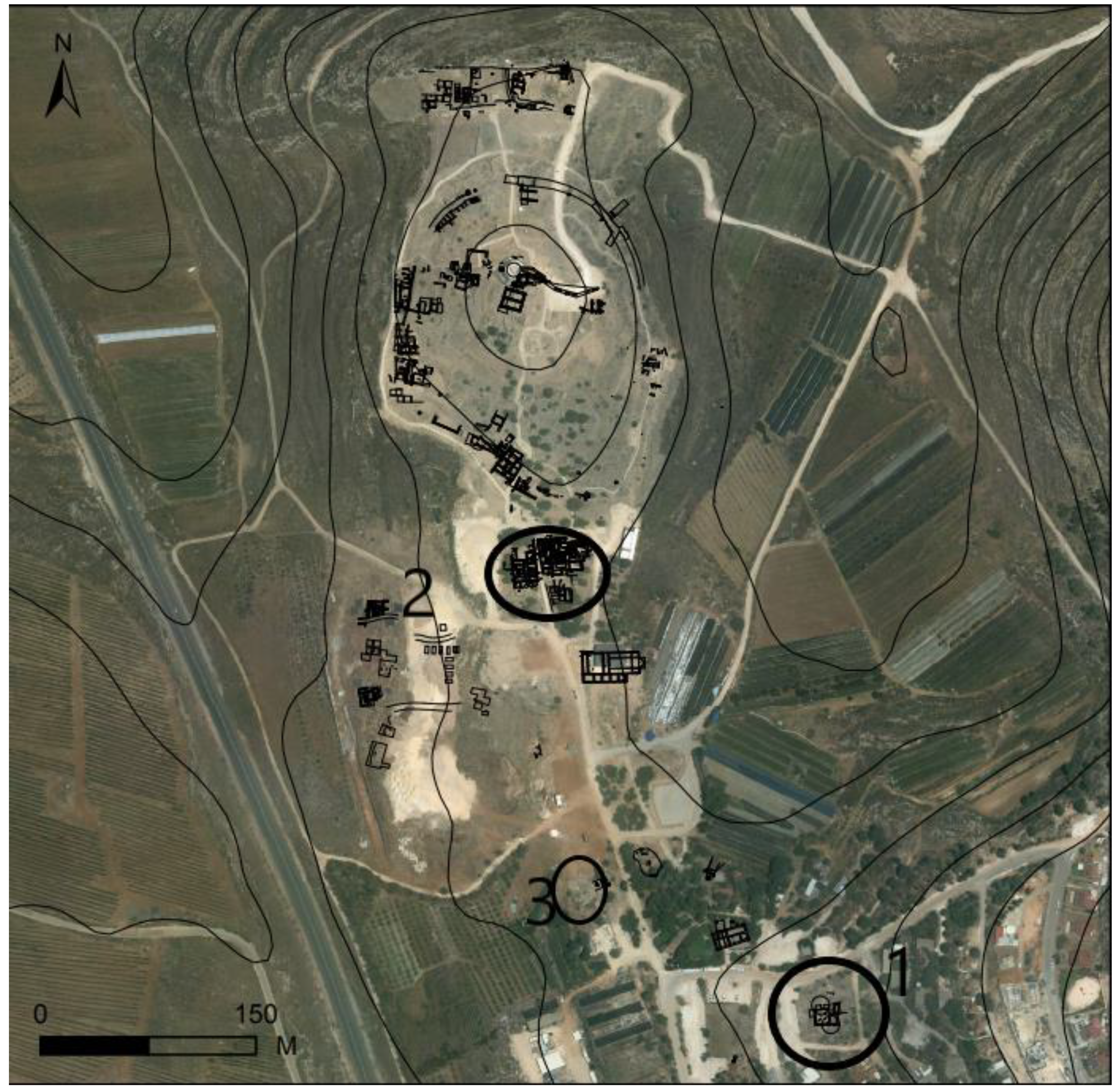
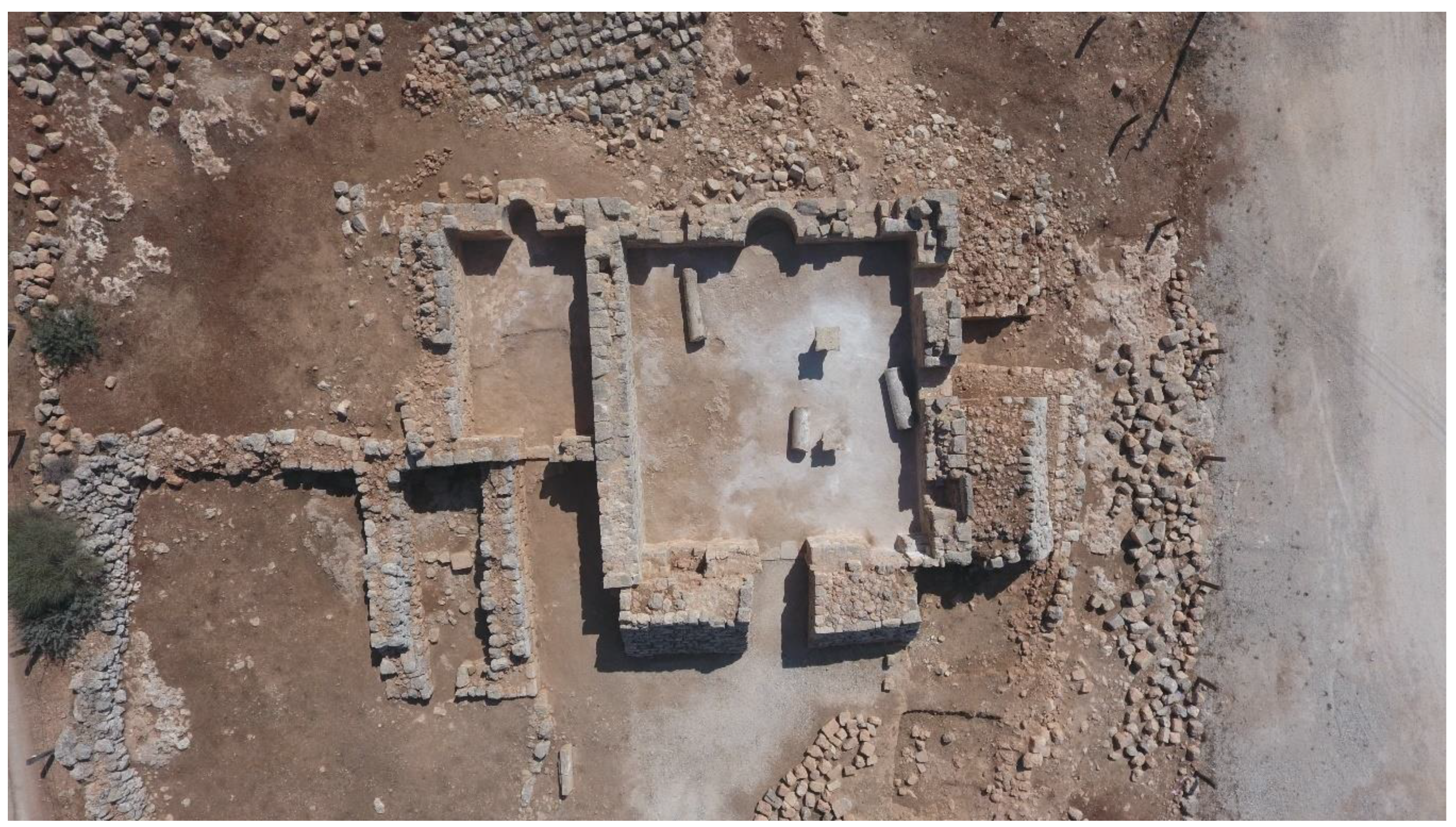
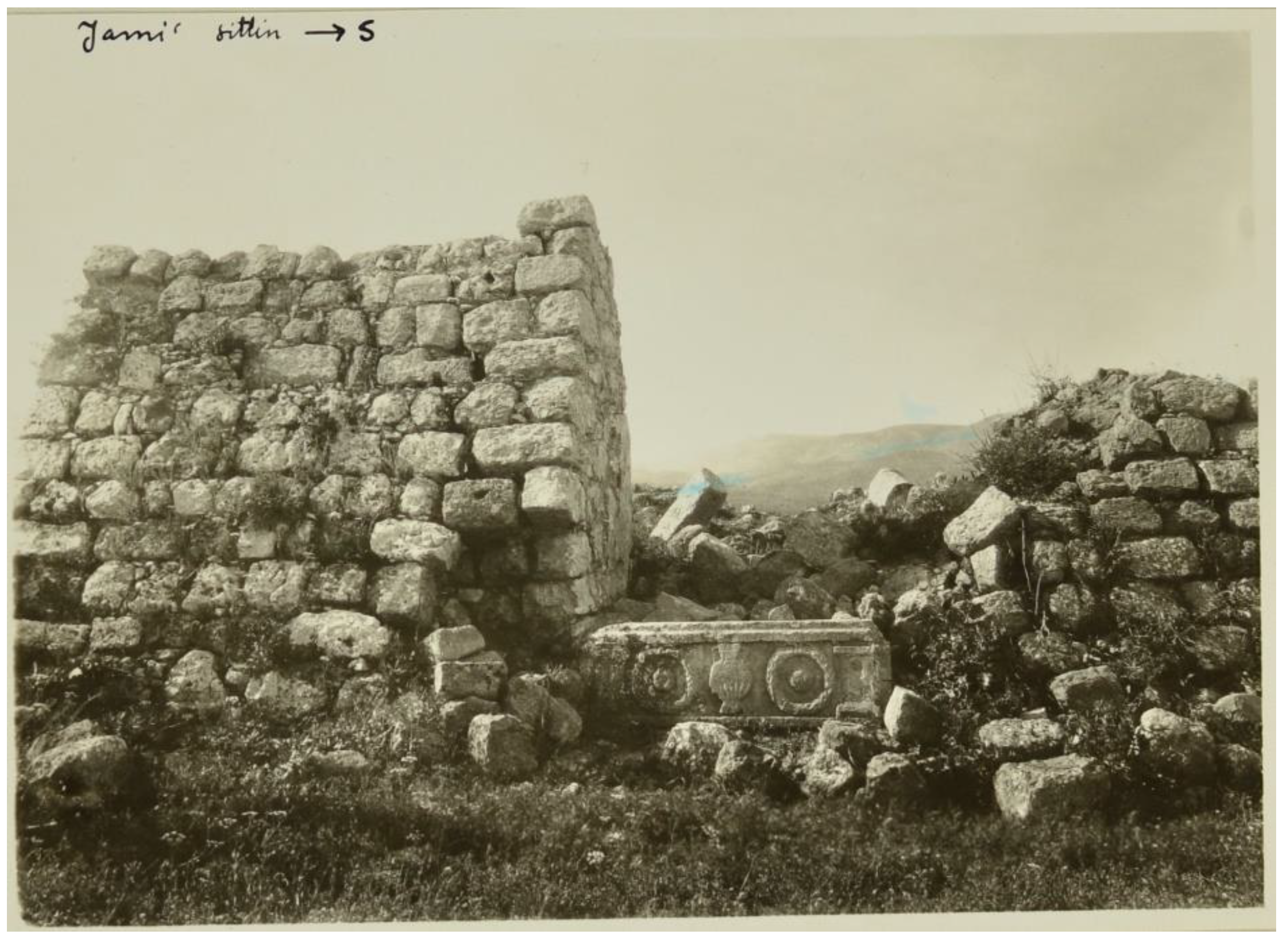
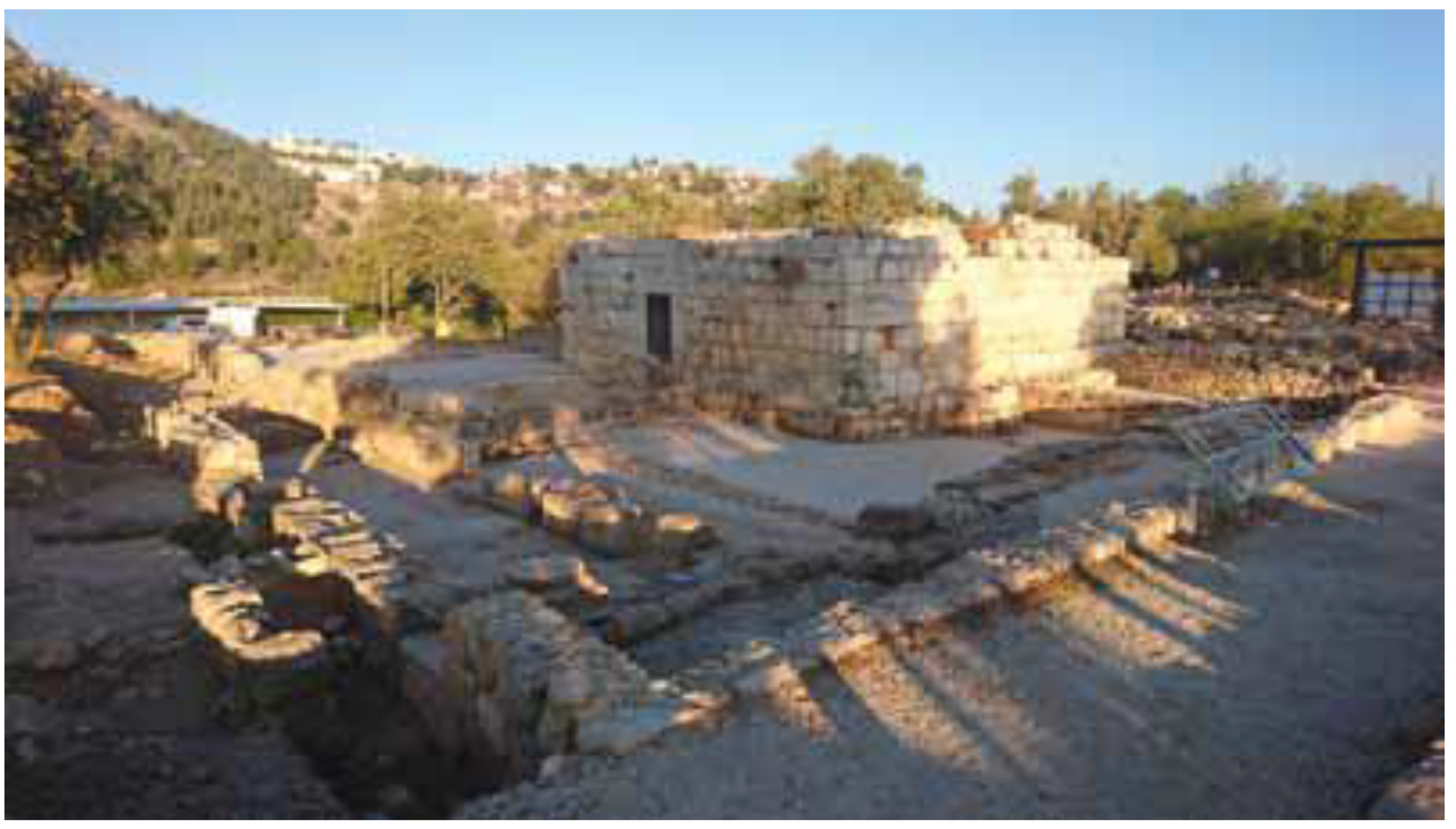
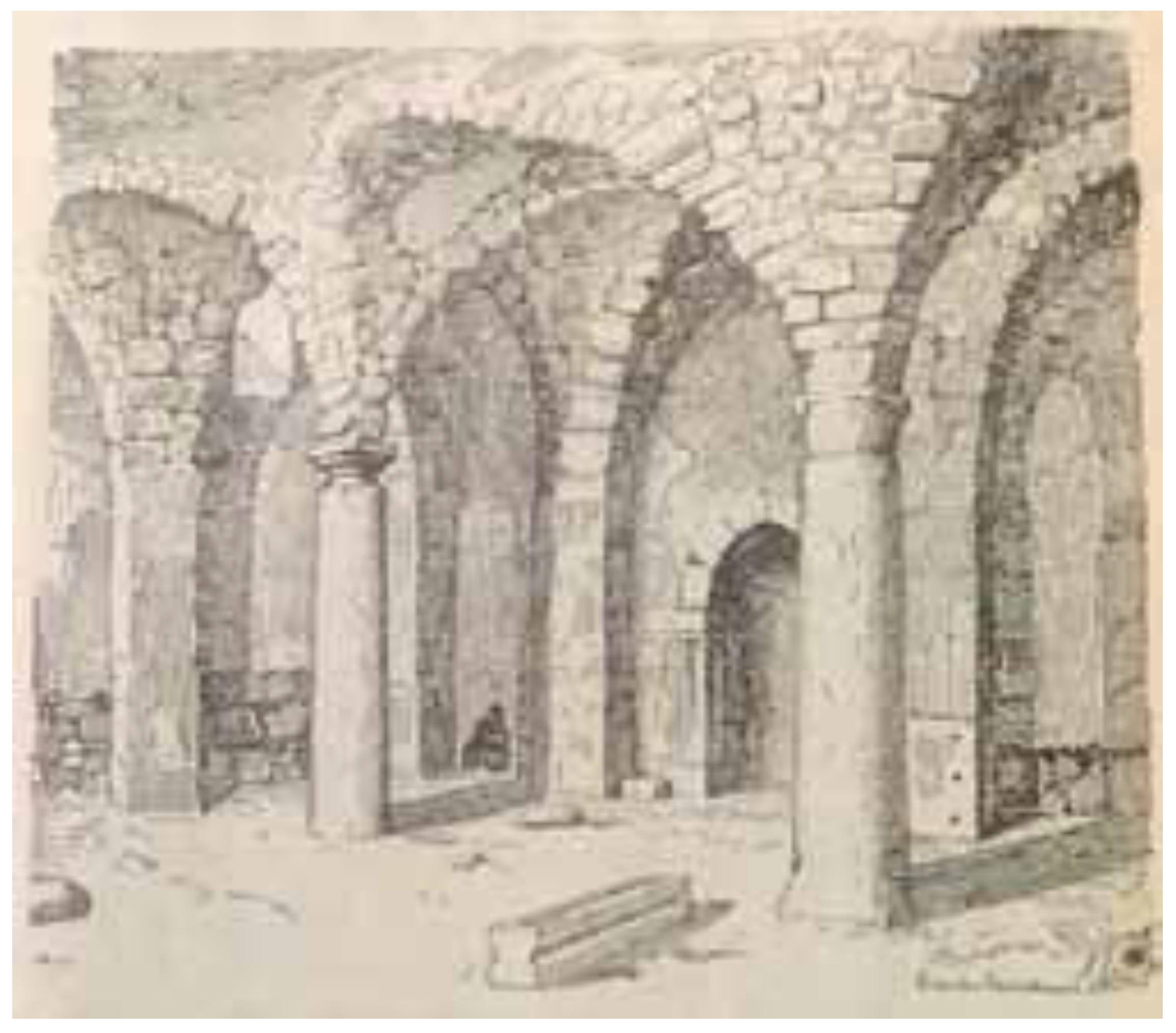
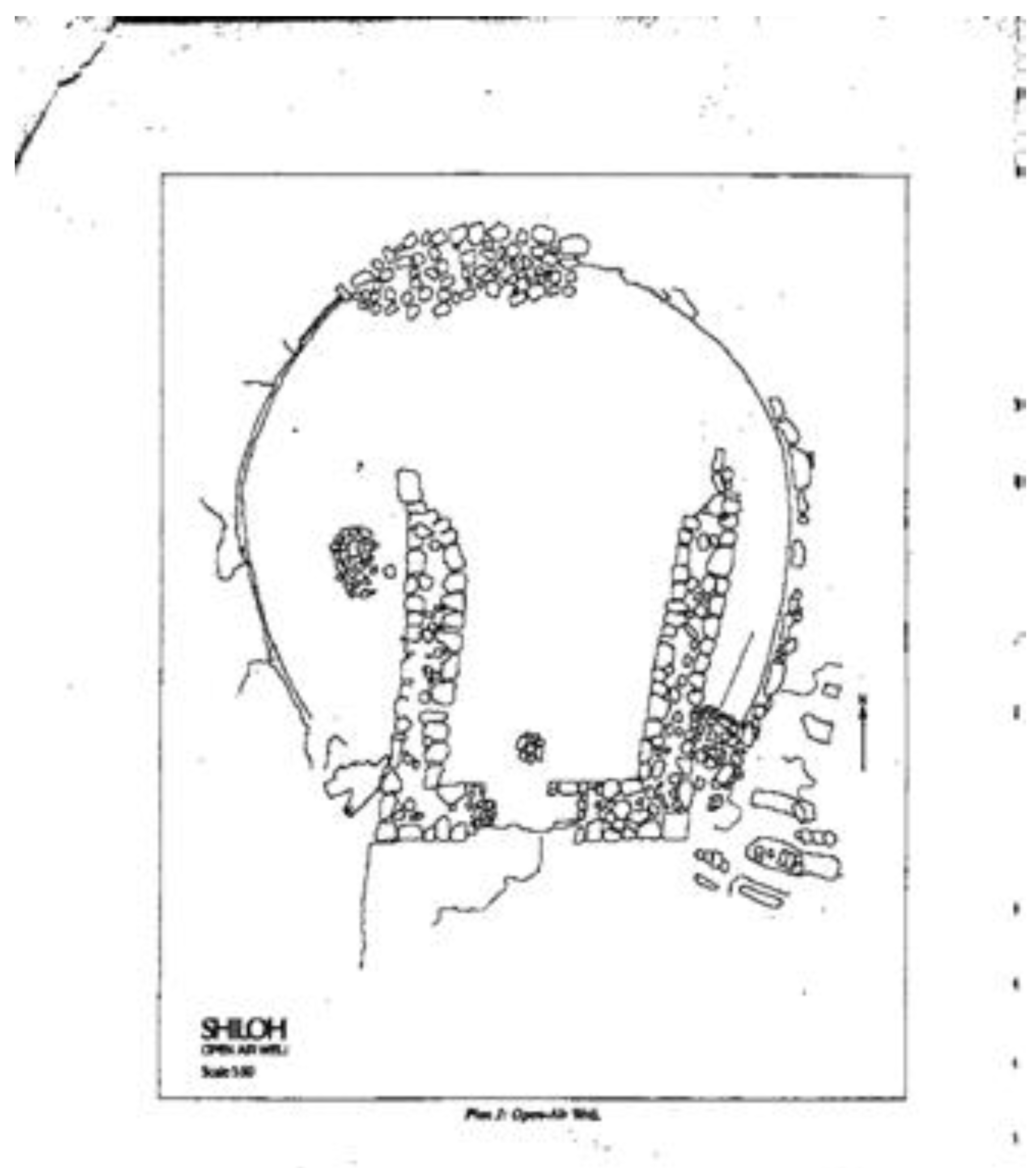
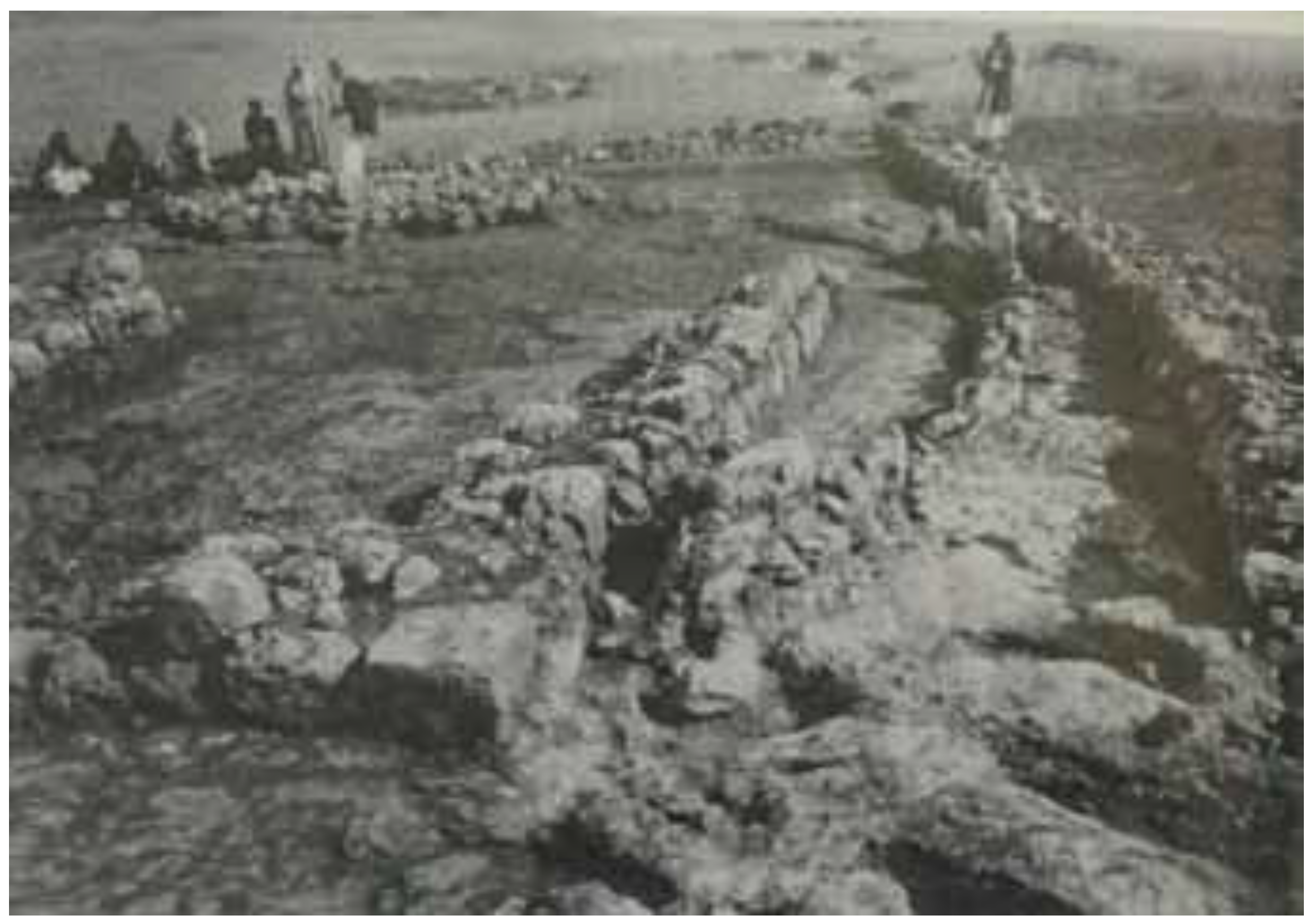
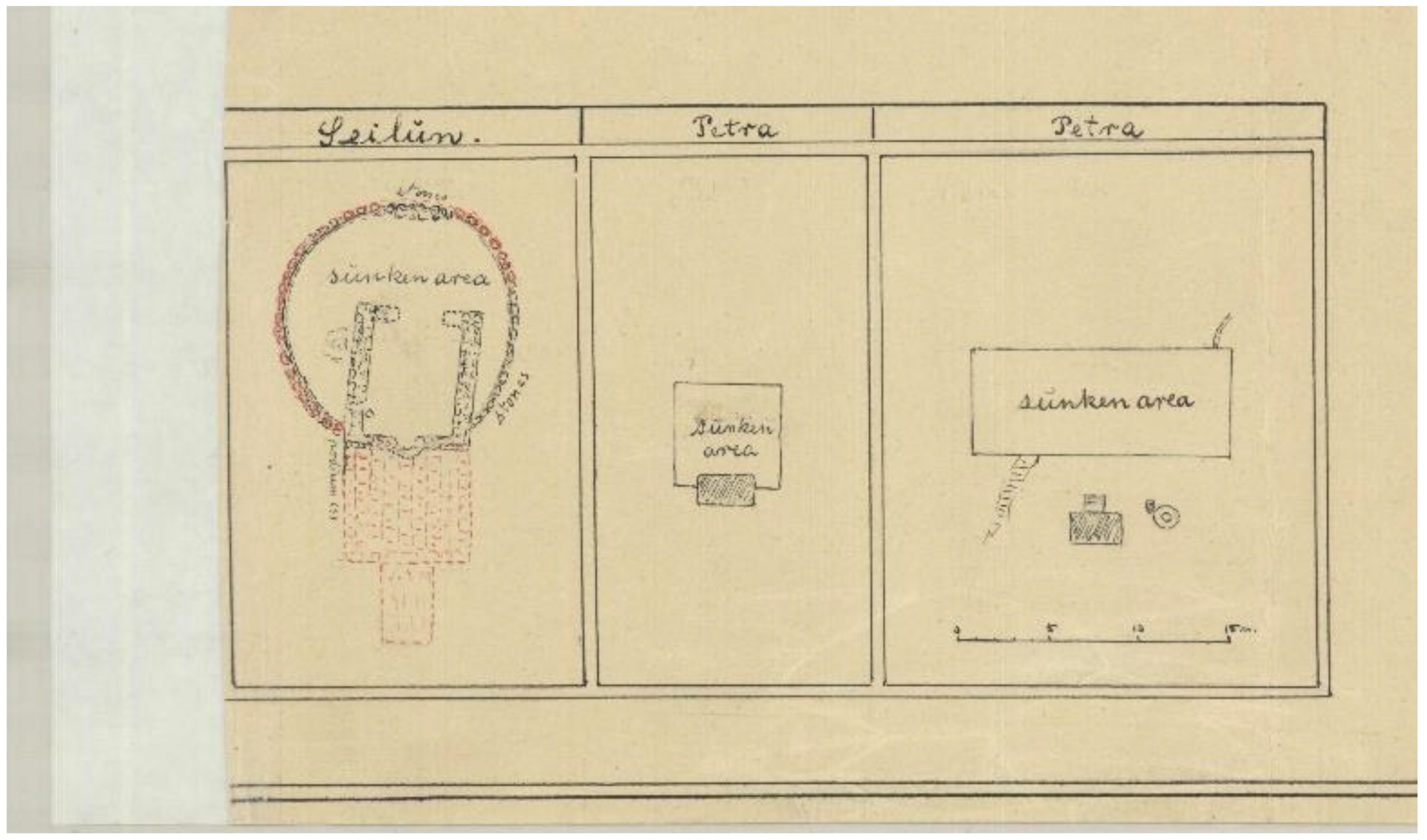
© 2020 by the authors. Licensee MDPI, Basel, Switzerland. This article is an open access article distributed under the terms and conditions of the Creative Commons Attribution (CC BY) license (http://creativecommons.org/licenses/by/4.0/).
Share and Cite
Shcwartz, A.; Shemesh, A.O. Medieval Shiloh—Continuity and Renewal. Religions 2020, 11, 493. https://doi.org/10.3390/rel11100493
Shcwartz A, Shemesh AO. Medieval Shiloh—Continuity and Renewal. Religions. 2020; 11(10):493. https://doi.org/10.3390/rel11100493
Chicago/Turabian StyleShcwartz, Amichay, and Abraham Ofir Shemesh. 2020. "Medieval Shiloh—Continuity and Renewal" Religions 11, no. 10: 493. https://doi.org/10.3390/rel11100493
APA StyleShcwartz, A., & Shemesh, A. O. (2020). Medieval Shiloh—Continuity and Renewal. Religions, 11(10), 493. https://doi.org/10.3390/rel11100493




